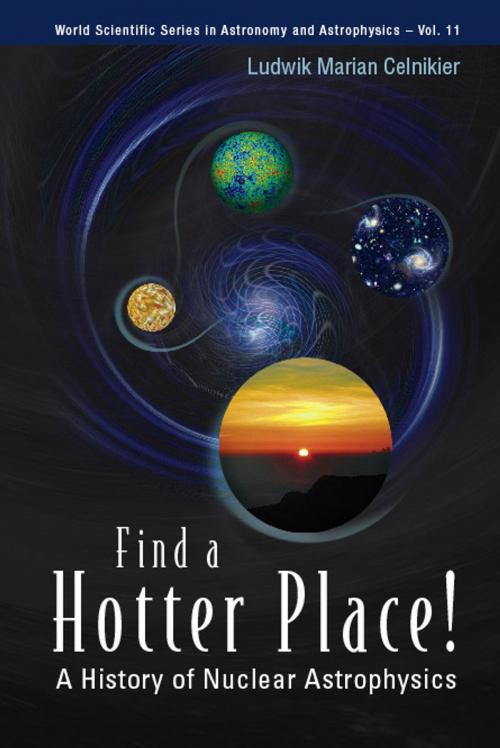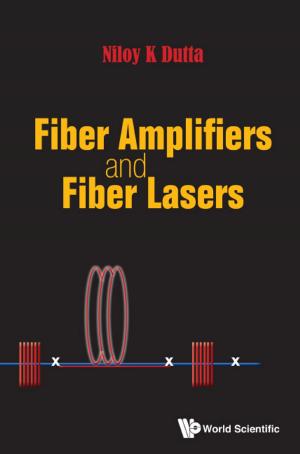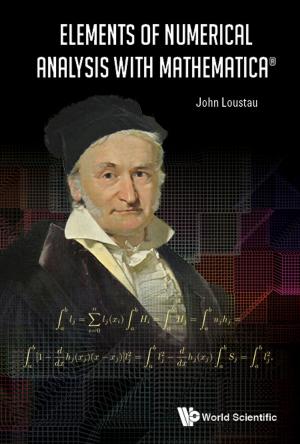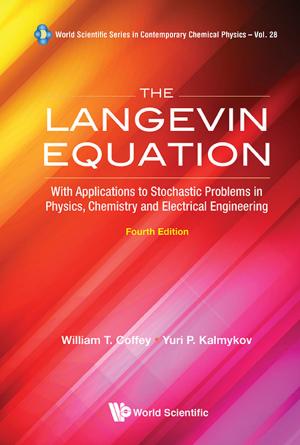Find a Hotter Place!
A History of Nuclear Astrophysics
Nonfiction, Science & Nature, Science, Physics, Astrophysics & Space Science| Author: | Ludwik Marian Celnikier | ISBN: | 9789814338202 |
| Publisher: | World Scientific Publishing Company | Publication: | March 27, 2006 |
| Imprint: | WSPC | Language: | English |
| Author: | Ludwik Marian Celnikier |
| ISBN: | 9789814338202 |
| Publisher: | World Scientific Publishing Company |
| Publication: | March 27, 2006 |
| Imprint: | WSPC |
| Language: | English |
Find a hotter place! is the insightful story of the tortured path that led to our current understanding of how the elements in the Universe came to be. This is a story which began in Greek Antiquity, with the first musings on the nature of matter and the void, and continues today with ever more refined analyses involving virtually every aspect of 20th century physics, astronomy, cosmology and information technology. Identifying the source of stellar energy, probing the earliest instants of the Universe, and discovering of how and where each element was made are some of the outstanding success stories of the 20th century, but have received little attention beyond the specialized literature.
The year 2007 marks the 50th anniversary of the publication of one of the key papers on stellar nucleosynthesis, universally referred to as the B2FH paper. This book is a timely survey of how a new discipline — nuclear astrophysics — was born, and how it has matured. Almost completely non-technical, the book remains scientifically rigorous, and thereby fills an important gap.
Science is not a linear process, as the ill-named “scientific method” might suggest to the unwary. The author emphasizes the meanders, the dead ends and the obsessive dogmas which have guided researchers through the 20th century. He also makes it clear that our understanding of where the elements come from has come through discoveries in diverse, not necessarily related, disciplines.
Contents:
- The Vacuum, the Universe, and Things That Go “Pop” in the Night
- Eleven Quadrillion Six Hundred Thousand Billion Tonnes of Coal per Second
- Fin de Siècle, Fin du Monde
- A Mystery Wrapped in an Enigma
- The Rise of the New Physics
- The Chicken and the Egg
- The Best of Times and the Worst of Times
- A Tale of Two Theories and One Dogma
- Relics of a Bygone Age
- Cosmic Ash
Readership: Students, academics, and the general public interested in the history of physics and astrophysics.
Key Features:
- A wide-ranging history of the notion of “vacuum”
- A historical review of the major scientific discoveries from which “nuclear astrophysics” emerged
- A history of the major controversies surrounding the origin of the elements
- A clear, qualitative description of what we now know about the origin of the elements
- A critical overview of certain “growth points” in cosmology
- A chronological table of major astrophysical discoveries (and related items) made during the 20th century
Find a hotter place! is the insightful story of the tortured path that led to our current understanding of how the elements in the Universe came to be. This is a story which began in Greek Antiquity, with the first musings on the nature of matter and the void, and continues today with ever more refined analyses involving virtually every aspect of 20th century physics, astronomy, cosmology and information technology. Identifying the source of stellar energy, probing the earliest instants of the Universe, and discovering of how and where each element was made are some of the outstanding success stories of the 20th century, but have received little attention beyond the specialized literature.
The year 2007 marks the 50th anniversary of the publication of one of the key papers on stellar nucleosynthesis, universally referred to as the B2FH paper. This book is a timely survey of how a new discipline — nuclear astrophysics — was born, and how it has matured. Almost completely non-technical, the book remains scientifically rigorous, and thereby fills an important gap.
Science is not a linear process, as the ill-named “scientific method” might suggest to the unwary. The author emphasizes the meanders, the dead ends and the obsessive dogmas which have guided researchers through the 20th century. He also makes it clear that our understanding of where the elements come from has come through discoveries in diverse, not necessarily related, disciplines.
Contents:
- The Vacuum, the Universe, and Things That Go “Pop” in the Night
- Eleven Quadrillion Six Hundred Thousand Billion Tonnes of Coal per Second
- Fin de Siècle, Fin du Monde
- A Mystery Wrapped in an Enigma
- The Rise of the New Physics
- The Chicken and the Egg
- The Best of Times and the Worst of Times
- A Tale of Two Theories and One Dogma
- Relics of a Bygone Age
- Cosmic Ash
Readership: Students, academics, and the general public interested in the history of physics and astrophysics.
Key Features:
- A wide-ranging history of the notion of “vacuum”
- A historical review of the major scientific discoveries from which “nuclear astrophysics” emerged
- A history of the major controversies surrounding the origin of the elements
- A clear, qualitative description of what we now know about the origin of the elements
- A critical overview of certain “growth points” in cosmology
- A chronological table of major astrophysical discoveries (and related items) made during the 20th century















